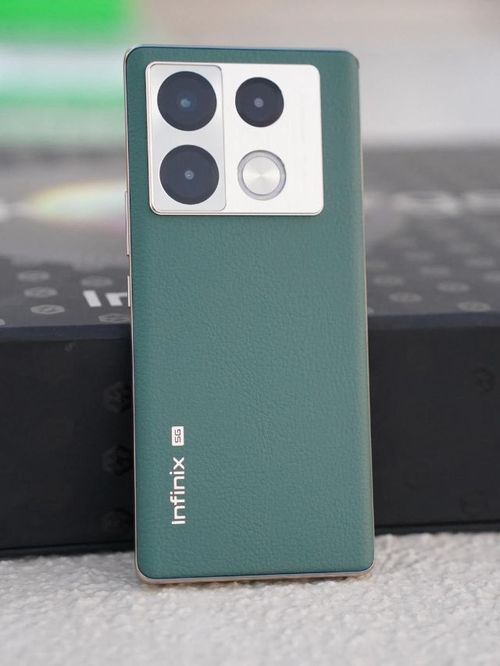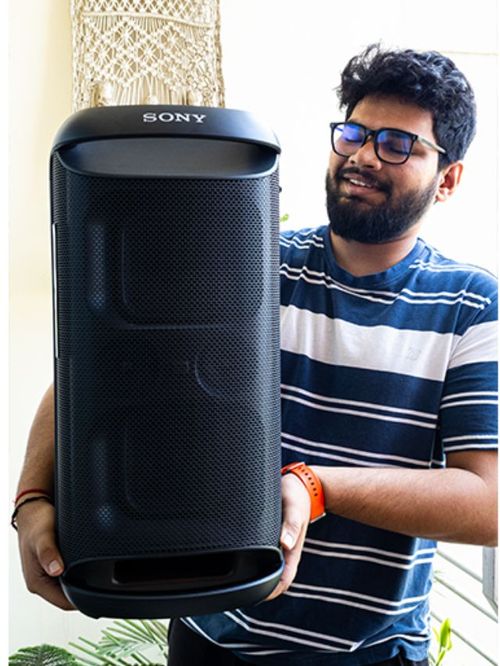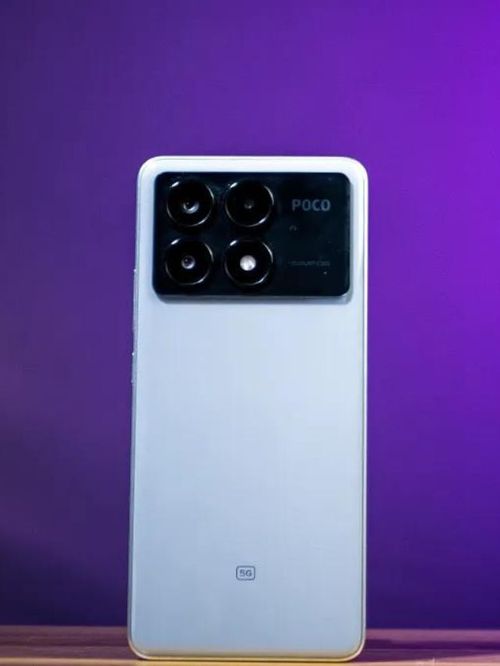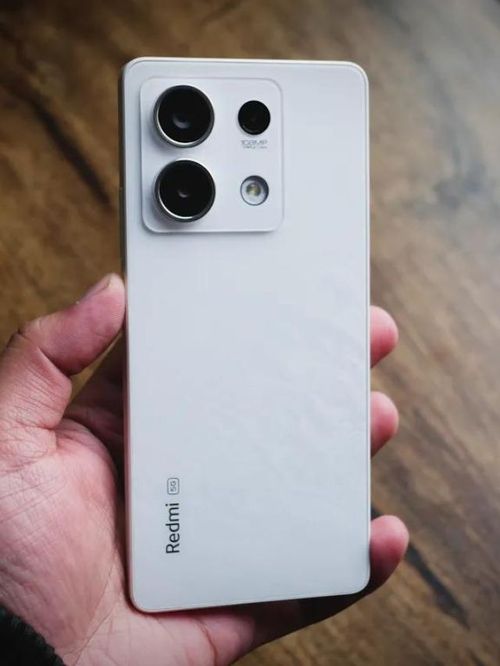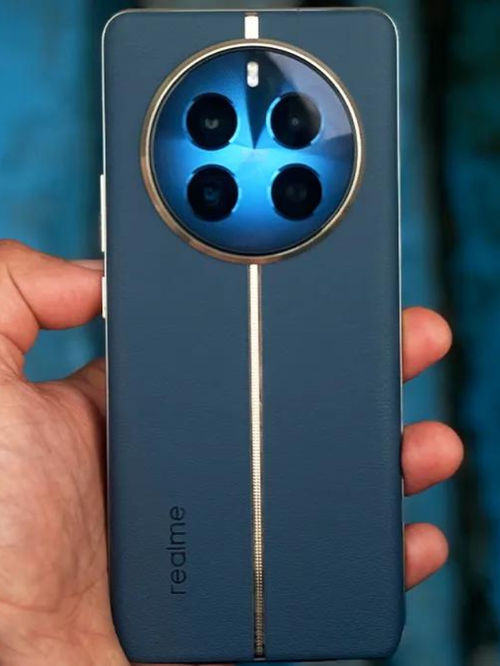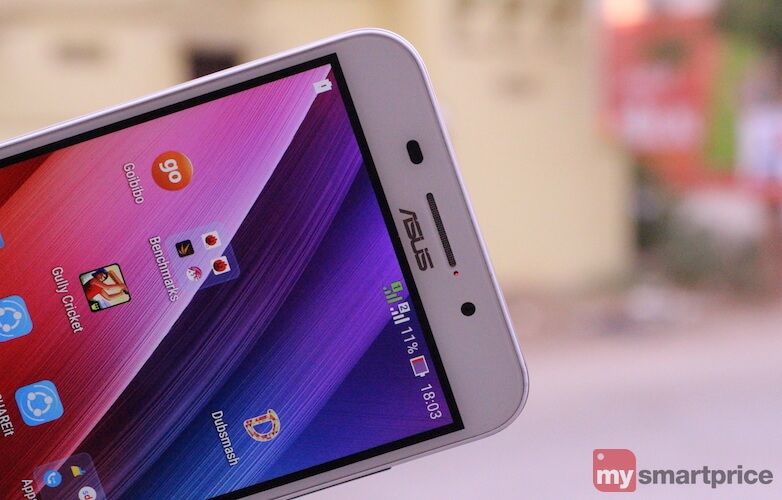
Consider this hypothetical question: If smartphone users across the world could ask manufacturers to improve one aspect of their device, what would it be? A unanimous answer would be battery life. The fast-draining battery life has been the bane of smartphone users ever since the introduction of Android. The last one year saw many devices with better battery capacity being launched, but many of these failed to offer adequate performance in other aspects.
Asus Zenfone Max
Rs. 9,999Manufacturers such as Gionee and Lenovo were the first ones to address the issue of poor battery life by launching smartphones with huge battery capacities. The Gionee Marathon M5 was the first device to feature a huge 6,020mAh battery and following it was the Lenovo Vibe P1 with a 4,900mAh battery. Both these smartphones were launched in the mid-range segment. Asus, the Taiwanese multinational company, was the first one to address this issue in the sub-Rs.10,000 price bracket with a device called the Asus ZenFone Max.
The Asus ZenFone Max is powered by a 5,000mAh battery which is pretty impressive considering its price of Rs.9,999. Announced in September 2015, this smartphone is available in the market from early 2016. The device is available in two colour variants – white and black. We got our hands on the white coloured variant and here’s our full review of this power-packed device.
Design
Asus is the only manufacturer out there which consistently follows the same design language for all of its smartphones regardless of whether it be a flagship, mid-range, or an entry-level device. So, when the ZenFone Max looks exactly like one of the ZenFone 2 series of smartphones, it comes as no surprise. Moreover, as is the case with the ZenFone series of smartphones which are bulkier and heavier than most other devices, the ZenFone Max too follows suit. The device weighs 202g, which is mainly because of the 5,000mAh battery inside. However, the heavyweight doesn’t make the device awkward to use, and the device sits well in hand because of the curved back. Despite not following the conventional design wisdom of a candy bar form factor as other manufacturers like Samsung and Motorola do, the Asus ZenFone Max has a comfortable feel in the hand.



Display
The ZenFone Max has a 5.5-inch display that has a resolution of 720x1280p which translates to a pixel density of 267 PPI. The display is protected by a layer of Corning Gorilla Glass 4 technology. Due to the low pixel density, the sharpness and viewing angles are slightly affected. Nevertheless, the display is still decent enough, especially for a smartphone which costs just under Rs.10,000.

Brightness levels are decent, and in bright sunlight, the text is visible only with the brightness set to maximum. However, the Auto Brightness mode on this device is quite a task to deal with, so we ended up adjusting brightness levels manually all the time.
Overall, the display on the ZenFone Max is only decent and nothing great, and competing smartphones like the Coolpad Note 3, the LeEco Le 1S and the Lenovo K3 Note offer much better ones, instead.
Hardware
Going by the battery-centric devices released in the recent past in the mid-range and entry-level segment, it has been observed that most of these tend to compromise on the hardware. The same applies in the case of the ZenFone Max as well. Asus has integrated outdated hardware, namely a quad-core Qualcomm Snapdragon 410 chipset that is clocked at 1.2GHz. The chipset is coupled with 2GB of RAM for handling the system and application tasks. Graphics are taken care of by the Adreno 306 GPU clocked at 400MHz.



Software and apps
The Asus ZenFone Max runs Android 5.0.2 Lollipop with the company’s customised ZenUI on top of it. At the launch of ZenUI 2.0, the company had claimed that its UI had more than 1000 enhancements when compared to Google’s stock Android. None of the material elements introduced with Android 5.0 are present in ZenUI. That apart, the company has used a default colour in the status bar, which can be noticed in all the system apps. Third-party apps downloaded from PlayStore don’t support any kind of material design.
 Like many manufacturers, Asus also offers a theme engine. With it, you can customise the entire UI including the app icons, system elements and wallpapers. The UI also offers many useful features like the Touch Gesture mode which includes gestures like double tap to wake up the device and drawing a letter on the screen in sleep mode to open up the corresponding app. There is also another one called Motion gesture which offers two features – ‘shake shake’ which allows you to take a screenshot by shaking the device twice, and a flip mode, which allows you to play/pause music by flipping over the phone but only while you are using the Asus Music app. The one-handed mode can be enabled by double pressing the home button.
Like many manufacturers, Asus also offers a theme engine. With it, you can customise the entire UI including the app icons, system elements and wallpapers. The UI also offers many useful features like the Touch Gesture mode which includes gestures like double tap to wake up the device and drawing a letter on the screen in sleep mode to open up the corresponding app. There is also another one called Motion gesture which offers two features – ‘shake shake’ which allows you to take a screenshot by shaking the device twice, and a flip mode, which allows you to play/pause music by flipping over the phone but only while you are using the Asus Music app. The one-handed mode can be enabled by double pressing the home button.
The major issue that we had with ZenUI was that it comes with a lot of preloaded apps such as Asus Mobile Manager, Laser Ruler and MyAsus. While we feel that the company shouldn’t have included these in the first place, Asus has gone one step further, and the UI now redirects the user to the PlayStore to download the apps. Asus has included an Auto Start Manager through which you can choose to stop certain apps from running when the device boots up.
Our first impression of ZenUI was definitely not impressive, and we were quite annoyed with the amount of bloatware on this device. With no options to change it, getting used to the software might be the only option you have here.
Camera
In terms of the camera department, the ZenFone Max features the same specifications as the ZenFone 2 Laser, which boasts of being the first device to use the Laser Autofocus technology. The ZenFone Max houses a 13-megapixel rear camera with the Laser Autofocus system and a dual-tone flash. There is also a 5-megapixel front-facing camera for selfie lovers.

 The front-facing camera is also a decent shooter in both indoor and outdoor conditions. Indoors, the images taken with the front camera lack details and also have a decent amount of noise in them. Images taken outdoors, on the other hand, look really beautiful with a good amount of details.
The front-facing camera is also a decent shooter in both indoor and outdoor conditions. Indoors, the images taken with the front camera lack details and also have a decent amount of noise in them. Images taken outdoors, on the other hand, look really beautiful with a good amount of details.
 The camera app is the same that we’ve seen on all Asus’ devices till date. The application offers a plethora of options such as Manual controls, HDR mode, Beautification mode for both front and rear cameras, Night mode, Slow motion, Time Lapse, Low light mode, Depth of field, and also a feature that allows you to create GIF animations. We tried each one of them and had no complaints whatsoever, with each of them working just fine.
The camera app is the same that we’ve seen on all Asus’ devices till date. The application offers a plethora of options such as Manual controls, HDR mode, Beautification mode for both front and rear cameras, Night mode, Slow motion, Time Lapse, Low light mode, Depth of field, and also a feature that allows you to create GIF animations. We tried each one of them and had no complaints whatsoever, with each of them working just fine.
 In terms of video, both the cameras can record 1080p videos. Video recording, however, is not the best on this device. The sensor fails to remove the shakes while capturing a video and there is also considerable noise in them.
In terms of video, both the cameras can record 1080p videos. Video recording, however, is not the best on this device. The sensor fails to remove the shakes while capturing a video and there is also considerable noise in them.
The camera on the ZenFone Max is one of the best in its price segment, except for its one flaw wherein images turned out overexposed in bright sunlight. Since this can be removed by using the manual mode, we can safely say that the ZenFone Max has the best camera in its price segment.
Audio and video
ZenUI offers a default music player which has almost all the features that you’d expect from one, and it does the job rather well too. It handles all types of files, including .flac. The app has a minimalistic design and by simply sliding from the left of the screen, the menu shows up with categories such as Playlists, Favourites, Newly Added and Most Played. The app also allows you store and retrieve your favourite music tracks. The device has a Radio app which allows you to tune into the various radio stations.
In terms of multimedia playback, the device has a single loudspeaker at the bottom of the rear. We found the quality of the audio through it to be not too great.
The default video player has a very neat design. It was able to play 720p videos without hassles and 1080p videos with some stutter, but not 4K videos because of the 720p screen.
Performance
As mentioned earlier, the device features relatively low-end hardware – a dated Qualcomm Snapdragon 410 chipset that is clocked at 1.2GHz and 2GB of RAM. An Adreno 306 GPU takes care of the graphic-intensive tasks.
In day-to-day tasks such as using social networking apps and making calls that last for more than an hour, the device performs well. It also shows no glitches or lags which opening or closing apps when multitasking.
However, we did experience certain issues with the notification drawer, but this could more likely be due to the software. That apart, there were no other problems with the UI. We were able to play games like Beach Buggy Racing and Angry Birds Go! without any issues, but when we tried running graphic-intensive games like Asphalt 8 and Dead Trigger 2, the device struggled quite a bit.
 Call quality is decent, but we noticed that the phone would heat up a lot if the call lasted for more than an hour, which can be quite problematic.
Call quality is decent, but we noticed that the phone would heat up a lot if the call lasted for more than an hour, which can be quite problematic.
In terms of benchmarks, the device scored 24,991 in the AnTuTu benchmark test which tests the overall performance of the device. In 3DMark IceStorm Unlimited, which tests the gaming performance of the device, it scored 4281. Finally, in the GFXBench OpenGL, the device scored 9.3fps, which is relatively lower when compared to other smartphones in the same price range.
Battery life
The USP of the Asus ZenFone Max is undoubtedly its battery. With a 5,000mAh battery inside it, the phone delivers a great battery performance. We tested this by putting the device through our video loop tests, and its battery lasted through around 12 hours of continuous video playback, which is amazing considering its price point.
On usage involving making calls for more than an hour, using social networking apps for more than six hours, streaming videos on YouTube for about 30 minutes and a whole lot of gaming, the phone easily lasts a day. On relatively lesser usage, we noticed that the device would even last more than a day, and at times, even up to two days with around five percent charge still remaining. All in all, the Asus ZenFone Max offers a brilliant battery backup on a budget and in this department, it trumps all its competition.
Conclusion
Priced at Rs.9,999, the Asus ZenFone Max offers you a great camera, superb battery life and decent overall performance. But, it has its flaws too. The 720p display just about gets the job done, and you do wish that the device had a Full-HD display. The loudspeaker isn’t the best and for those of you who love watching videos on the device, it can even be disappointing.
With its outdated hardware and heavily bloated software, the Asus ZenFone Max limps, but proves its worth in terms of its battery life and camera. All said and done, if you want a device with a good battery life on a budget price, look no further than the Asus ZenFone Max.








